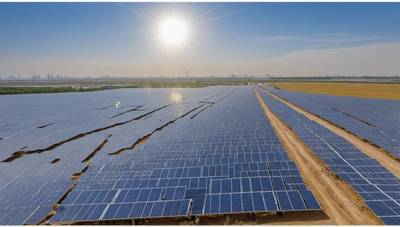China urges solar industry to reduce overcapacity
The Chinese industry ministry announced on Tuesday that it had held its second meeting in two months with representatives of the solar industry. It urged the industry to tighten regulations, reduce overcapacity, and reduce the extreme competition between firms.
The ministry issued a press release in which it told the representatives to "jointly encourage the sustainable and healthy development of the industry".
The statement said that parties should "curb low price disorderly competition", in reference to the overcapacity of the sector.
This discussion came after a meeting held in July, where the Ministry of Industry and Information Technology said the authorities should "promote an orderly withdrawal of outdated production capacities", raising expectations that the government would tighten up the reigns on this bloated industry. The meeting of the Politburo in late July, which sets the economic direction for China, raised further hopes that the government will launch a long-awaited anti-deflation campaign. China's largest solar firms will lose nearly one third of their employees by 2024, according to company filings, after losses in the manufacturing chain reached $40 billion in 2018. Analysts say that a plan to shut down and buy back around one-third the capacity of the solar panel industry, led by the biggest producers of polysilicon (a building block for solar panels), will have difficulty gaining support from smaller producers and local government. Pricing reforms have also contributed to an uneven demand in this year. Power producers were rushing to construct their solar plants before the new policies took effect in June. Domestic demand has dropped sharply since the second half of the year, but if you average it out to 2025, the installations will still be at a record level. Analysts say that China can produce twice as many solar panels as the world is expected to buy in this year. However, they also claim that the industry needs to increase its manufacturing by 20-30% to be profitable.
(source: Reuters)






